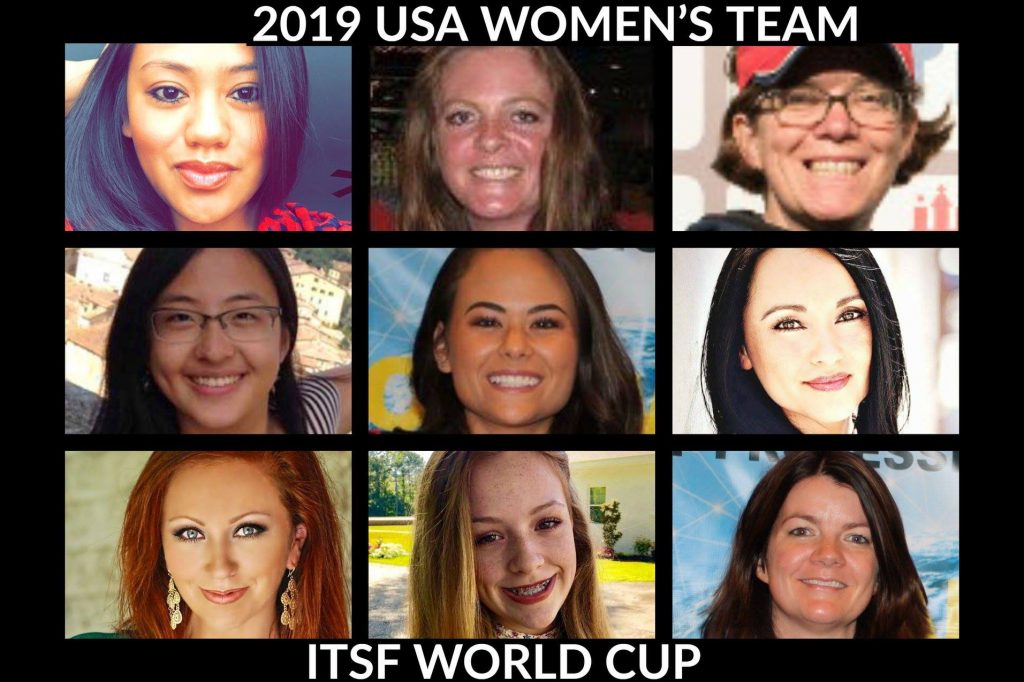
Surely by now you’ve heard about the amazing World Cup win by the US Women’s Soccer Team. About how they humbly celebrated their victory with a nice dinner and cocktails. How they went on to cheer on the US Men’s team to victory after their own. How they proudly took the winner’s stand and sang the national anthem, the team’s captain having tears of joy for the “incredible honor to represent the United States.”
What, you didn’t hear about that? Oh no, I’m not talking about that women’s soccer team. I’m talking about the US Women’s Table Soccer Team. This team actually stood for the anthem, were proud to represent their country, worked as a team, and celebrated in humility and, unfortunately, near-anonymity. But these women deserve to be held in esteem and serve as role models for young girls, and young boys, as the kind of champions that Americans need.
I had the opportunity to talk to the team captain, Liz Moore, whom I’ve known for some years now. But first a little background. Table soccer, or foosball as it’s more commonly known here in America, is that game seen in bars across the country but mostly in the Midwest, upstate New York, and in pockets elsewhere. While you may have seen it in its tiny plastic toy form or in college student centers, often neglected by the video game players, or in some dive bars, sticky with beer and who-knows-what, it’s actually a difficult game that requires mental focus and physical skill to play correctly.
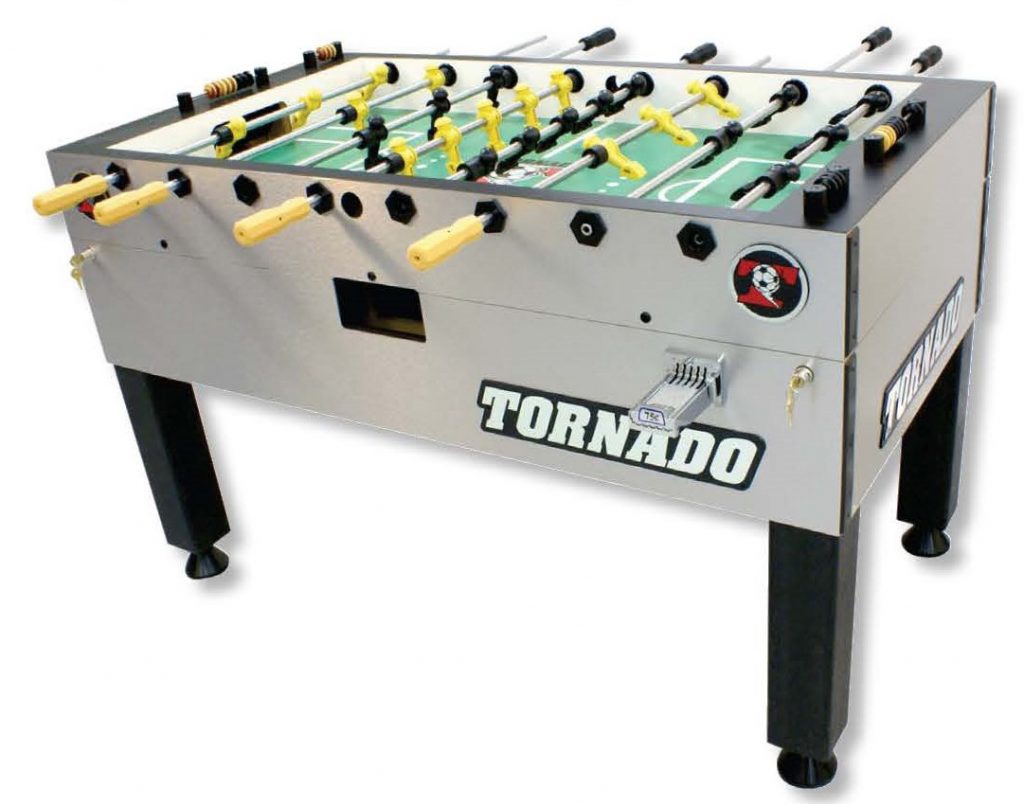
The foosball table has alternating bars with plastic soccer players or “men” on each bar. Four rods are controlled on one side of the table while the other four rods, identical to the first four, are controlled on the opposite side of the table. In the typical two-on-two game, each team takes one side of the table, with the “offense” player controlling the forward two rods of “men” and the “defense” player controlling the rear two rods of men. To an observer, it may appear like a slow game of passing a small, solid, plastic soccer ball back and forth between men on the rods, something that is actually very difficult to do with having the other team intercept the ball. The objective is to put the ball in position to score, by sending it into the goal, a hole in the side of the table defended by the goalie men on the rod nearest the table end. Once in position, the player will set up for a shot and then, in a blink that is almost invisible to those who don’t play the game, the ball is moved laterally and, with the powerful flick of the wrist, launched toward the goal. A loud, reverberating smack indicates that the ball went into the goal and hit the back wall of the table to score. A dull click indicates that the defense player was able to maneuver the goalie man to intercept the ball and, like in real soccer, can pass the ball to the teammate playing offense or, unlike in real soccer, can fire his or her own shot toward the goal and score from the back.
There are many kinds of shots in foosball, but the most common ones are the pull shot and the snake or rollover shot. In my day, the push-kick shot and the bank shot were also popular, but I understand they’re not used so much anymore. The pull shot involves placing the man on the far side of the ball, then quickly pulling it toward the player while simultaneously moving the man around the ball to kick it into the goal at some place during the pull. If done fast enough, the goalie cannot actually follow the shot but must anticipate whether the ball will be kicked toward the far end, middle, or end of the goal and protect that spot.
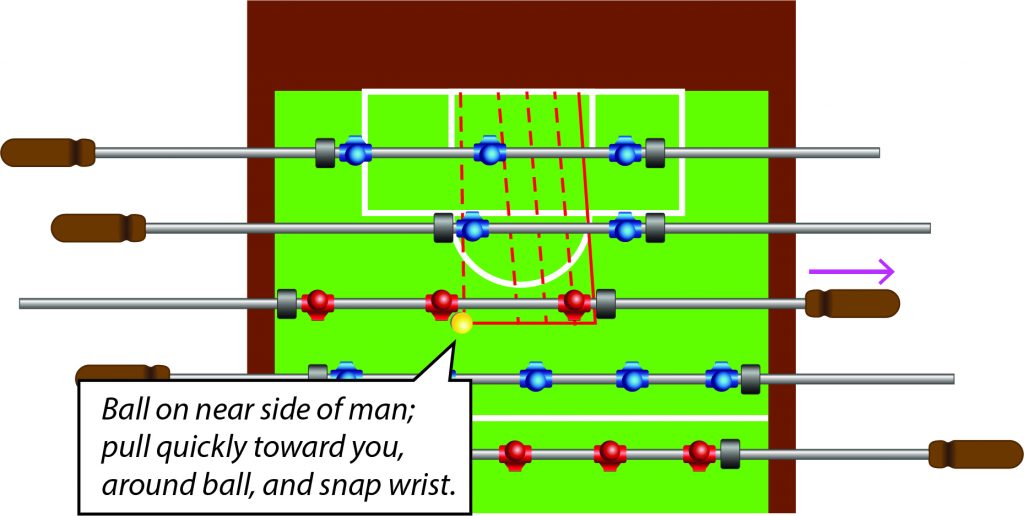
The rollover shot, or snake shot, involves pinning the ball to the table in front of the man. The key is that the player uses her wrist against the handle to control the ball rather than gripping the handle. The man moves the ball forward or backward and then the player rapidly pulls her arm upward until the handle is in her palm, spinning the rod almost 360 degree and giving the man a powerful kick.

The push-kick shot involves placing a man on the near side of the ball, then quickly pushing the ball to a farther man on the rod that will, using a powerful wrist flick, kick the ball into the goal. Again, the goalie must anticipate where the second man will kick the ball in order to block it.
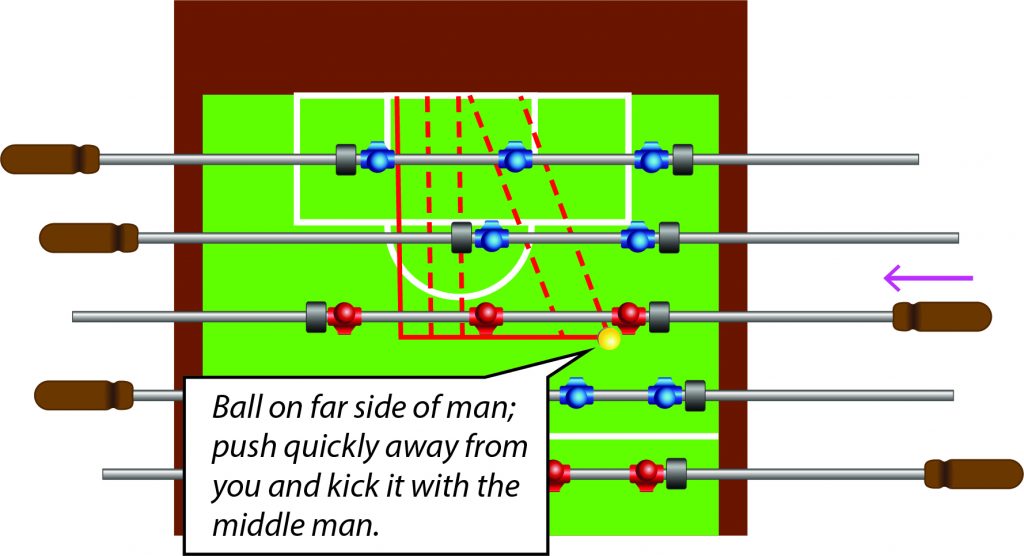
The bank shot involves swiftly kicking the ball on its side, angling it into the wall such that it bounces off the wall, behind the goalie, and into the goal. The goalie must anticipate not only the angle of the shot, but which wall it will bounce off of and thus which direction it will come from. All of these shots can be performed using the defensive men or the offensive men. And there are many variations of these shots and many ways of performing them, but I hope you get the idea. Succeeding at foosball, especially in international competition, requires concentration, dexterity, and years of practice.
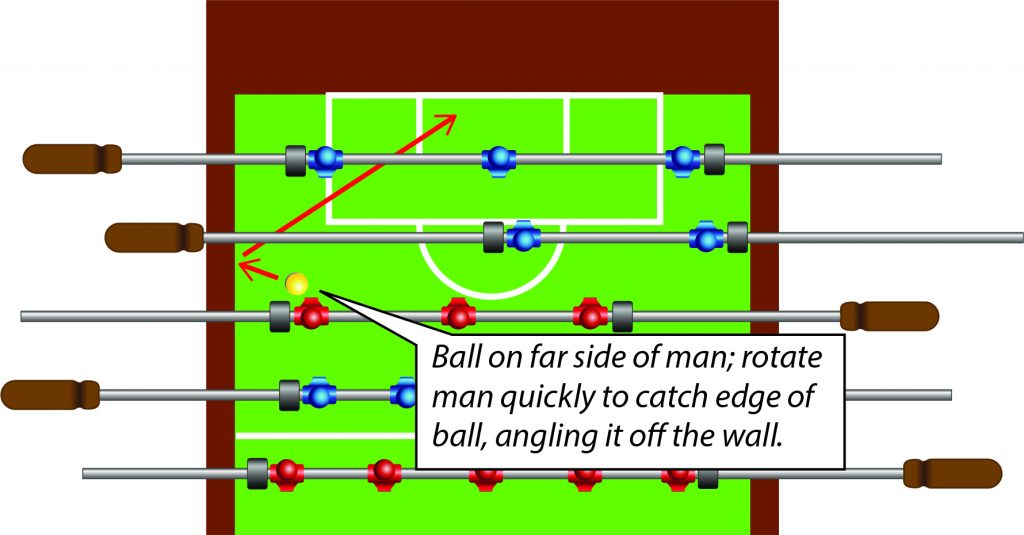
Now that you understand the game, or at least the basics, I want to tell you about the International Table Soccer Federation (ITSF) 2019 World Cup competition that was held in Murcia, Spain from July 2nd through 7th. Teams from around the world played daily, exhausting elimination rounds of the tournament until one team was victorious. Like their larger-scale cousins, the US Women’s team beat out every competitor to claim the title. But unlike their well-paid and better publicized cousins, these women raised their own funds for travel and accommodations, played only for the fun of the game and the thrill of the competition, were humble in their win, and respected the flag and the values of the country they represented.

Liz Moore was the captain of the U.S. Women’s team that included Deliza Baumbach, Traci Brubaker, Stayce Fowler, Jackie Han, Midori Kimura, Keisha Rue, Sullivan Rue and Jessica Sanftleben. I’ve known Liz for several years now, and I interviewed her about her experience.
Tell me about your background and how you got interested in foosball.
My family moved to Tampa Florida in the early 80s. I discovered foosball in a local pool hall very close to the high school I attended. I visited Northdale Billiards almost daily after school. Every foosball table was occupied, and there were people watching the games and cheering. That's when I learned that the game I had paid very little attention to was very organized and very exciting. I didn't know it at the time, but I was watching the very best players in the world play a local foosball tournament. I was in the right place at the right time. I just happened to live in a city where my natural talents would be nurtured by the technical skill and mental wisdom of champions. I had to know more. I wanted to hear the boom of the ball smacking against the back of the goal when I made my shot. I fell in love with foosball and we “married.” After 30 years of highs and lows, I came away with multiple world titles, a spot in the National Hall of Fame, and an ITSF International World Cup Title. My cup overflows!
Which were your most exciting games at the championship?
There were several moments at the ITSF World Cup that were very exciting. One in particular was playing against Austria in the qualifying round. As a team we were struggling a bit and had fallen behind. The score was 36 to 31, with 40 points needed to win the match. We were able to hold them off, and our anchor doubles team—Jackie Han & Keisha Rue—scored 9 points in a row to give us the win, 40 to 39. We squeaked it out by one point! That comeback gave us the confidence we needed when we faced the Austrians again in the quarterfinals.
The second match with the Austrians was personally exciting because I got to see my training benefit the team. In one match I was playing in the goalie position. I was able to put up a strong defense and score 2 points from the goalie position. Then, to end the match I got to anchor in the forward position with my partner Midori Kimura. I scored 3 long pull shots in a row for the win. This was a historical moment. Our first final!
One other moment that was exciting was in the final. We were off to a slow start and a little behind on points against the Germans. I was in the second doubles slot, playing in the goalie position. After losing two more points, my partner and I switched positions. She put up a stellar defense, and I was able to bring us a two-point lead. We were able to maintain our lead in the match, and helped set the tone for the rest of the match, and our ultimate win.
What position do you play?
Early in my career while developing my skills, I played goalie. Almost every new player starts in this position. However, I always knew I wanted to be a forward. I believe that the best forwards must learn and understand the concepts and fundamentals of the goalie game. I started playing at 14 years old and by the time I turned 16 I had turned pro and was considered one of the best female forwards of the game. This World Cup was the 5th one I had participated in. It was also the first time I didn't stay in the forward position. I played mostly goalie which was quite exciting and scary. It was exciting because I enjoy and am quite skillful in shooting and passing from the back. It was scary because I struggle defensively sometimes. I have been insecure on defense for 6 or 7 years now, but after this World Cup I’m hoping to improve.
What is your favorite shot?
My main shot is the pull shot. I shoot this from both positions, offense and defense. I do have a snake/rollover as a secondary shot, but it’s not as consistent as my pull. There was a moment in the final where I struggled to score my pull and switched to a snake to score a point.
How did you personally celebrate your win? How did the team celebrate?
I personally celebrated our win with dinner and some cocktails with a few of my teammates. We really didn’t get out to celebrate as a team. Part of that was because after our final match and ceremony, the women gathered to watch the US men play and win their final match. After that it was late, and we were all scattered in different parts of the arena and we all stayed in different hotels. I believe our "team celebration” was the awards ceremony. That moment was incredibly special for all of us.
What message do you have for women competing at foosball or in sports in general?
My message for women competing in sports or foosball comes from my personal struggles and experiences. I’ve been blessed to have a wonderful career. I’ve won and lost many matches. In recent years I struggled with my losses. What I mean by struggle is that I had many moments of anger and frustration that was considered not very sportsman-like. I had to make things right by apologizing and owning my actions. I had to be proactive in my change and growth. People are watching and mistakes will happen. Be accountable. Be respectful.
How did you feel representing the United States?
We had an Olympic style ceremony where we were given our gold medals, we held our flag, and they played our national anthem. I'm sure we all cried tears of joy as we sang. It is an incredible honor to represent the United States!
Thanks for your time, Liz. Congratulations to you and to the team, and to the men’s team who also won the Men’s Championship.
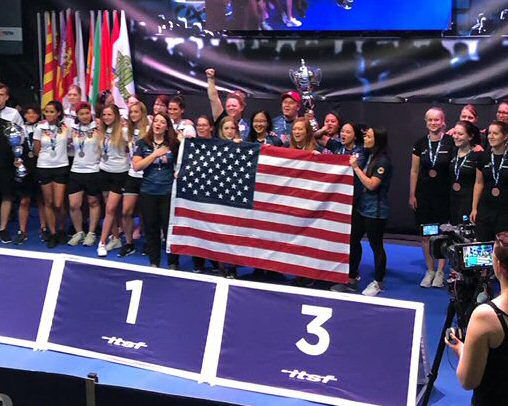
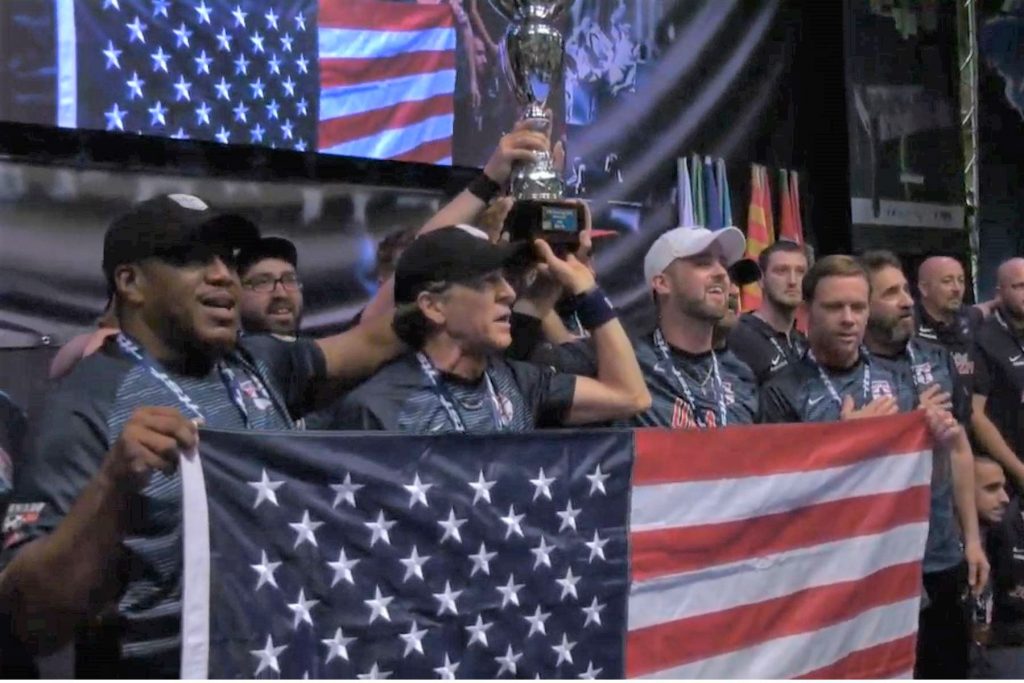
Bob Zeidman is a writer, inventor, and entrepreneur. He learned foosball while attending Cornell, and in grad school at Stanford was one of the two-member team that won the 1982 Stanford intramural foosball championship.
Subscribe to our evening newsletter to stay informed during these challenging times!!